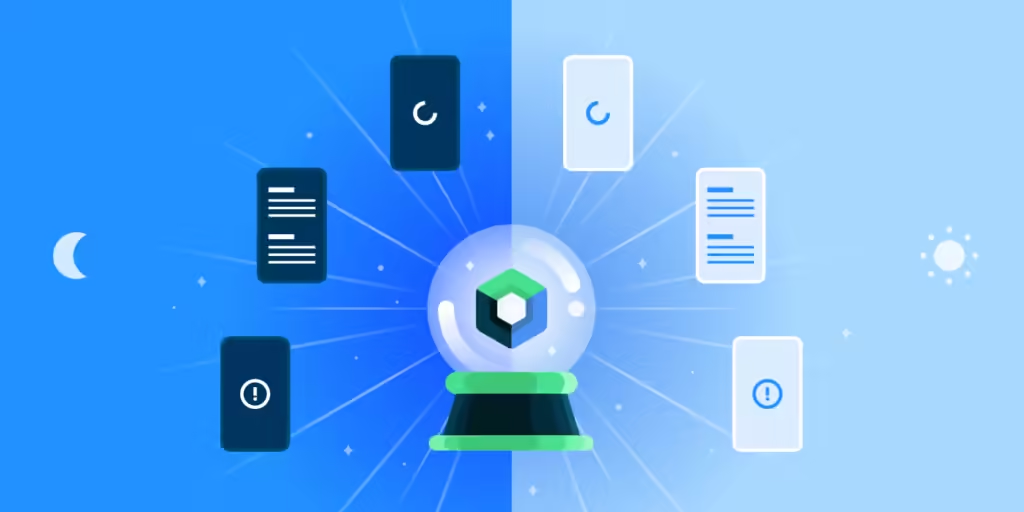Jetpack Compose 2.1, released alongside Android 15, is reshaping how developers design modern Android applications. This latest version brings advanced tools, better performance, and richer customization options, enabling developers to create beautiful, responsive, and seamless user interfaces more efficiently. In this post, we will explore the standout features of Jetpack Compose 2.1 and how it leverages the capabilities of Android 15 to take UI design to the next level.
The Evolution of Jetpack Compose
Since its inception, Jetpack Compose has been embraced as the modern toolkit for building native UIs with declarative code. It eliminates the need for XML-based layouts and allows developers to write UI elements directly in Kotlin. With its intuitive design and seamless integration with Android features, Jetpack Compose has quickly become the go-to choice for many Android developers.
Now, with Jetpack Compose 2.1, Google has fine-tuned the toolset even further, incorporating enhanced features that align with the latest Android advancements.
What’s New in Jetpack Compose 2.1?
1. Improved Performance
Jetpack Compose 2.1 delivers significant performance improvements. Through optimization in the rendering pipeline, animations, recompositions, and overall UI rendering are now smoother, providing a faster and more fluid experience on a variety of devices. These performance gains are particularly important for Android 15, which emphasizes efficiency, especially on resource-constrained devices.
2. Advanced Animations and Transitions
One of the highlights of Compose 2.1 is its enriched animation library. With Android 15, developers can now utilize more intricate animations and transitions, bringing more personality to apps. Jetpack Compose 2.1 makes it easier to implement advanced effects such as spring animations, physics-based motion, and smoother transitions between UI elements. The new transition APIs allow developers to choreograph multiple animations simultaneously, creating immersive experiences without sacrificing performance.
For example, handling transitions between different screen states or elements like buttons, icons, and cards is more streamlined with the new AnimatedContent and AnimatedVisibility composables. These features allow for fluid state transitions, making your app’s UI more dynamic and visually engaging.
3. Enhanced Material 3 Support
With Material 3 (Material You), Android’s new design language, taking center stage in Android 15, Jetpack Compose 2.1 integrates deeper support for these modern design principles. This means more dynamic color theming, responsive layouts, and personalized UIs, where app design can automatically adjust to system-wide color schemes, offering a more cohesive and customized experience for users.
Compose 2.1 makes it easier to implement Material 3 guidelines by providing updated composables that work seamlessly with the design language, including new components like NavigationRail for tablets and foldables, and AdaptiveLayouts that dynamically adjust based on screen size.
4. Full Support for Foldables and Large Screens
As foldables and tablets become more popular, Android 15 enhances its large-screen support. Jetpack Compose 2.1 fully embraces this trend with improved tools for building adaptive UIs. The BoxWithConstraints and Modifier.windowInsets APIs make it easier to create layouts that adapt to various screen sizes, orientations, and window insets, ensuring your app looks and feels great on both foldables and traditional devices.
With this update, developers can design UIs that take advantage of the increased screen real estate, enhancing multi-tasking and content presentation on foldables like the Samsung Galaxy Z Fold or large-screen tablets.
5. Better Accessibility and Internationalization
Jetpack Compose 2.1 introduces new features for accessibility and internationalization, a must for developers aiming to reach a global audience. Android 15 focuses on inclusive design, and with this release, you can now better support right-to-left (RTL) layouts, dynamic font scaling, and improved screen reader support.
The Semantics API in Jetpack Compose is more powerful, allowing developers to define custom accessibility actions and descriptions for interactive elements, making apps more accessible to all users, including those with visual or motor impairments.

Building for Android 15 with Jetpack Compose 2.1
Android 15 brings a range of new capabilities that, when paired with Jetpack Compose 2.1, unlock new possibilities for app design. With enhanced privacy controls, tighter security measures, and optimizations for performance, Android 15 is setting the stage for faster, more secure, and personalized apps. Compose 2.1 complements these enhancements by giving developers tools that allow them to build UIs that are not only beautiful but also take full advantage of the latest platform features.
Here are some tips for building next-gen UIs with Jetpack Compose 2.1 and Android 15:
1. Leverage Dynamic Color: Use dynamic color theming to match your app’s look with the system-wide palette, offering a cohesive experience across all Android 15 devices.
2. Optimize for Foldables: Design layouts that are adaptive and responsive to large screens and foldable devices, ensuring your app takes advantage of the latest Android hardware innovations.
3. Use the Latest Material 3 Components: Integrate Material 3’s updated components, such as NavigationRail and ExtendedFloatingActionButton, to create a more polished and modern UI.
4. Prioritize Performance: Make use of Jetpack Compose’s performance optimizations to ensure smooth animations and minimal recompositions, especially on resource-constrained devices.
5. Implement Advanced Accessibility Features: Utilize the Semantics API to make your app more accessible and inclusive, ensuring it works well for all users, regardless of their abilities.

Conclusion
Jetpack Compose 2.1 paired with Android 15 is a game-changer for Android developers. With improved performance, advanced animations, support for large screens, and better accessibility features, this release elevates UI design to new heights. Whether you’re building apps for smartphones, tablets, or foldable devices, Jetpack Compose 2.1 provides the flexibility and tools you need to create fast, scalable, and user-friendly apps in 2024.
By embracing these new features, developers can ensure their apps not only stand out visually but also perform exceptionally well, offering users an immersive, engaging experience that leverages the best of Android 15.
Internal Links:
• Learn more about Jetpack Compose animations and how to use them effectively.
• Explore our guide on adaptive layouts for foldable devices.
External Links:
• Dive deeper into Material 3 design principles and how to implement them in your apps.
• Read the official documentation on Jetpack Compose 2.1 to get started.

